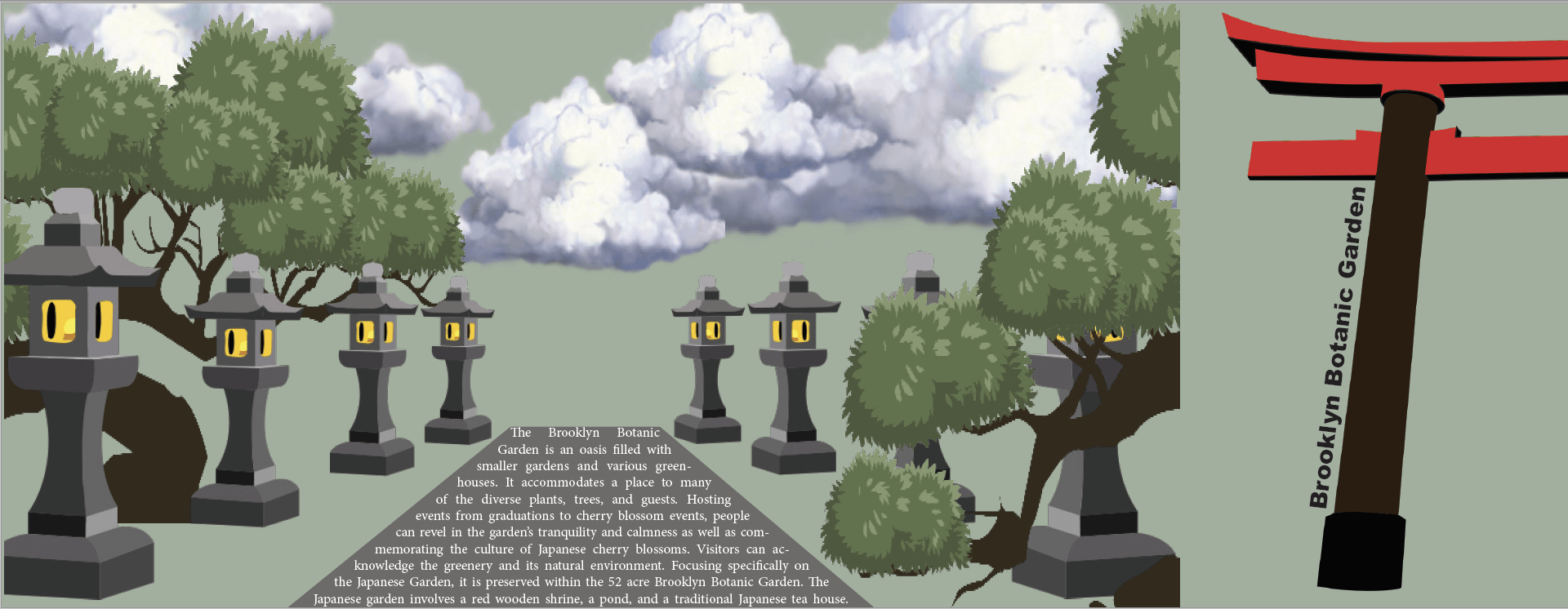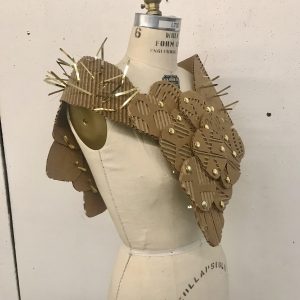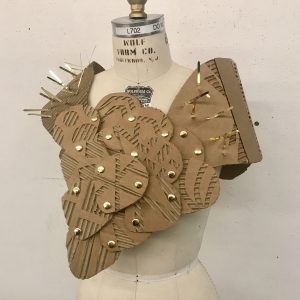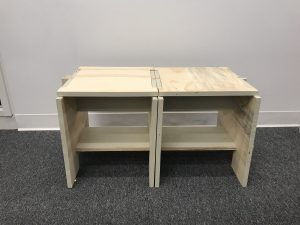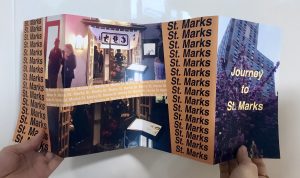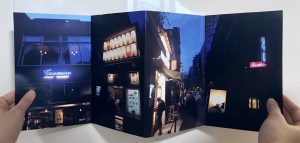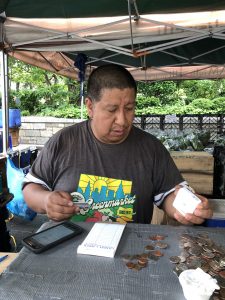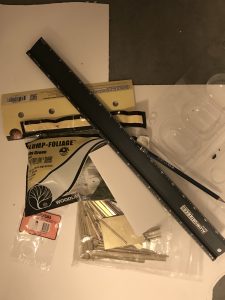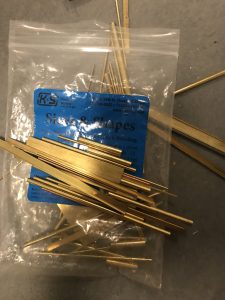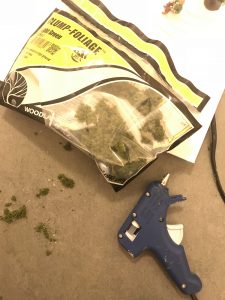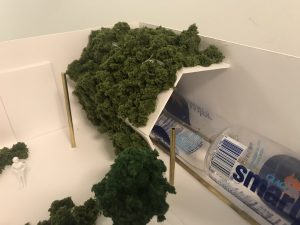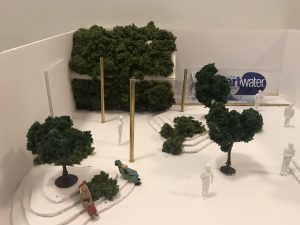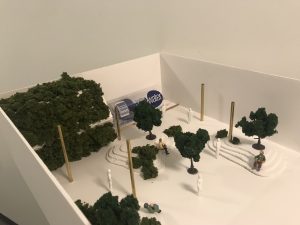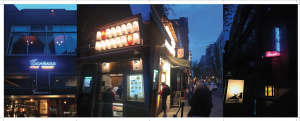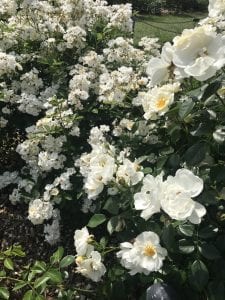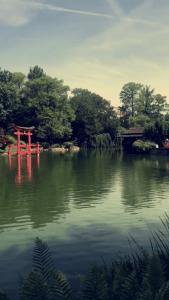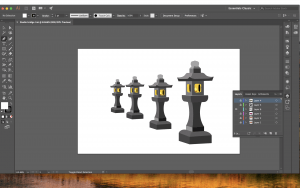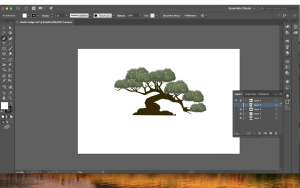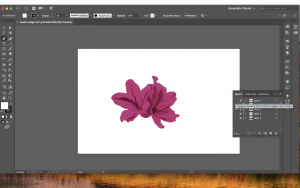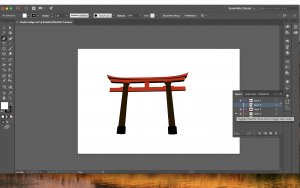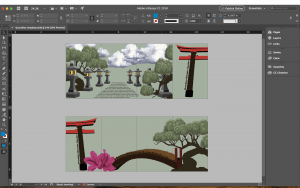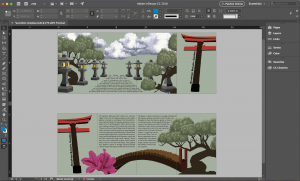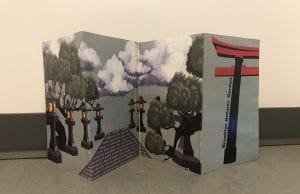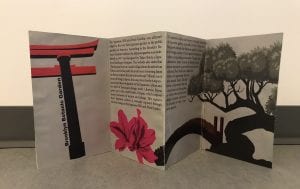Hi! I’m Yuri Kawada and I am 18 years old. I am half Japanese and Korean and I have lived in Seoul, South Korea all my life. Two years ago, I went to a summer pre-college arts and architecture program at Columbia University. Hence, this is my second visit to New York City and I am attending Parsons School of Design as a Communication Design major. Most of my artworks contain a multimedia of painting/drawing and adobe photoshop/illustrator and I have become fond of using graphic design techniques in most of my artworks. The three artworks inserted below sought to depict the hardships that I’ve faced as an introverted girl who lacked a distinctive identity within the community. Perhaps this is the reason for my strong affinity toward artists who insist on using bright and bold colors for their work.
My first-year experience at Parsons was a whole new experience. Exposed to numerous art mediums from different classes as well as learning more in-depth about the Adobe program. My space and materiality class worked specifically on the community and how our 3-dimensional designs help intervene with the community.
Space and Materiality
This project was specifically on making a wearable piece with cardboard and brad pins or thread. This helped me explore those different material connections without using glue. This was a challenge for me because it helped me experiment with different methods of connections.
Through this course, we were introduced to the woodshop, which was a first time for me. At first, it was usual for me to be unfamiliar with using the medium as plywood. But over time, I was able to improve my skills in a short period of time. I personally think that this turned out to be one of the successful pieces I have made and I also found a medium that I am now familiar with.
Drawing and Imaging
As for my drawing and imaging class, we dedicated most of our studio time on the computers. We were introduced to the different techniques we can apply to our projects, specifically in photoshop and illustrator.
For our final drawing and imaging class, we had created a book that had created a story that was up to us. Through this, we had learned the basics of InDesign and this was my first time creating a book.
This was a photo collage that I had created in photoshop. This was one of my favorite classes that I had learned so much about the Adobe programs because I am able to carry these techniques and apply it to my future works. This class theme was language and we had created many different projects created towards graphic visuals. We had created our own textures and shades of gray and applied it to our figure model composition. Our professor had majored in communication design, which helped me be more passionate about my major and beginning to get a taste of my major.
Studio 2
Similarly, I had used the same technique from my drawing and imaging class to my integrative studio 2 – the “Hero” project. Using photoshop, I had gathered several images that created the figure’s identity. The outcome of this project over-exceeded my expectations. I was quite unsure how it would turn out to be using images instead of the patterns I had used for my drawing and imaging figure project. However, this turned out to also be one of the artworks that turned out to be successful.
From my first year courses, the two highlights that were the most successful to me are the final project in Sustainable Systems and final book creation from my drawing and imaging class.
Highlight 1 – Sustainable Systems
For final design idea, we were informed to research specific activist communities related Climate Change, Air, Energy, Materials, and Water. Through our research, we are asked to design a resiliency-building intervention that demonstrates a system.
The Lowline is an underground park that is similar to the Highline. The Lowline is situated in the underground railing system in Williamsburg Trolley Terminal and it is built from an abandoned market building. It consists of 100 different types of plants that grow underground. The Lowline is another form of making an environmental space more green in the city of New York. The borough of Manhattan is a developed city – that is, the buildings are spread out as a grid space. Lacking the greenery of the natural environment, the Lowline helps visitors to appreciate and enjoy the green foliage at their own leisure and make the Williamsburg Trolley Terminal relive again from 1948. The Lowline is still under construction and is planning on opening to the public in 2021. From the contact of the Lowline team, the solar panels are installed underground connecting to the surface to absorb the sunlight into energy through the parabolic collector and reflected and gathered to one focal point that directs to the underground.
Through this design, my idea was to also create a transportation subway system connecting to the Lowline. Majority of New Yorkers utilize the subway system to transport from one place to another. Through this observation, I want to integrate a subway station in Williamsburg to provide a transportation system next to the Lowline because the Lowline is located underground.
As the process goes, I decided to do a mock-up of the Lowline area. I wanted to integrate the train subway system with the Lowline design. Integrating the subway transportation does not only create a transportation system but also a social system of people gathering to acknowledge to nature and greenery. The environmental component is also intervened with the system through the energy absorbed by the installed solar panels to the plants to the people who breathe in the air. Altogether, it creates a unity of systems that all work together. Thus, I collected materials from Blick Art store to purchase a foam board, artificial trees and moss, and metal steel. I used the glue gun to stick the majority of my objects and pieces to the foam board. In the artistic perspective, I wanted to make the design more interesting by adding the leftover moss to indicate as plants of the Lowline. Additionally, I indicated the entrance of the Lowline with a foam board door. Likewise, I utilized used water bottles as an additional piece of “sustainability”. The process took a while to design how I could place the subway – that is, placing the subway on the side or center of theLowline. Realistically, I thought it would be suitable to place the subway on the side to allow people to move easily around the Lowline. The spacious areas allow people to have more personal space and it also allows people to get away from the chaotic, cramped space of Manhattan. Hence, the design process and observations helped me to make careful decisions about where it can be a successful system and function of the Lowline.
Highlight 2 – Drawing and Imaging
The final project for this course was to create a booklet that involves a story from start to end. Additionally, there are different types of folds to create a book, such as accordion fold, gate fold, roll fold, and facing page fold. Thus, I wanted to create a story about my journey to St. Marks. Over the past four months, I have made memorable memories with my friends at St. Marks the most. For this reason, I wanted to show the different aspects of the shops along the street to make one unified panorama.
To make a booklet, I utilized another Adobe program (InDesign) from the programs that we have been using in the past (illustrator and photoshop). Using a new Adobe program, it overwhelmed me at first. However, I was able to quickly familiarize with the tools that were very similar to Adobe Illustrator.
As for my first iteration, I wanted to separate text from the images to give the value and importance of the text and image individually. However, I felt that it had made the text and the image too distant from each other, which made the booklet prevent from uniting as one. Through this, I decided to keep the images but change the color and style and the format of the text. As a result, I decided to balance out the image and the text facing the outside of the booklet. I added additional images of the shops at St. Marks and removed my name and make the letters of the booklet become a pattern of the image between 2D and 3D.
These two projects made it a significant highlight to my portfolio. In my personal experience, I rarely create 3-dimensional artworks. Thus, my first experience using 3 dimensional turned out to be successful by using sustainable materials (the water bottle) and the green artificial moss. As for my drawing and imaging, it was also my first time creating a book through InDesign. Looking back at my book, I hoped that I could have added more designs to my book instead of full images covering the whole 4-page panel. However, I think it the process of both the mock-up and the book was successful with thoughtful decisions and significant meaning behind each decision. The highlights of the two projects are mainly the process of experimenting and gaining experience with different mediums.
Integrative Studio 2 – Final Bridge 3
Front
Back
Learning from my drawing and imaging accordion fold book. I decided to use this technique in my integrative studio 2 final bridge 3 projects. I wanted to create an informational book for my bridge 3. I wanted to integrate my prior drawing and imaging book to create a more complex book for the place that matters to me. I decided to choose Brooklyn Botanic Garden as my place because I can personally relate to my personal identity and background as a half Japanese. When I had observed in the garden, it brought the nostalgia of my childhood memories of when I would often go to the shrine on New Years Day. Hence, I used specific elements of elements and objects that I had observed in the garden to symbolize the “identity” of the place. I used my own photograph and outline the important objects in Illustrator using the pen tool. This project integrates with my integrative seminar 2 essay, which assisted me to research the historical Japanese gardens and comparing the differences to the Brooklyn Botanic Garden. Additionally, the research helped me to gain more detailed knowledge about each components involving space and design to integrate into my studio project. I used illustrator to create an outline of each object and paste it into InDesign. The highlight of this piece is seeing the evolution from my drawing and imaging book project to the current bridge 3 project. I feel that I have improved my techniques as a designer. This informational pamphlet is for the people to know more about the Brooklyn Botanic Garden, specifically the Japanese garden.
Looking back at my first year, it was an intense and learning experience of the different mediums and types of projects. After all, I noticed that sustainability takes an important role in Parsons and I hope that I will grow as a better thinker and designer in the future in order to preserve the eco-friendly environment. As a communication design major, I hope to learn more in-depth about typography and more techniques on adobe program. After graduating from Parsons School of Design, I would love to work for some type of company logo or poster such as Google, Snapchat, or Facebook.
